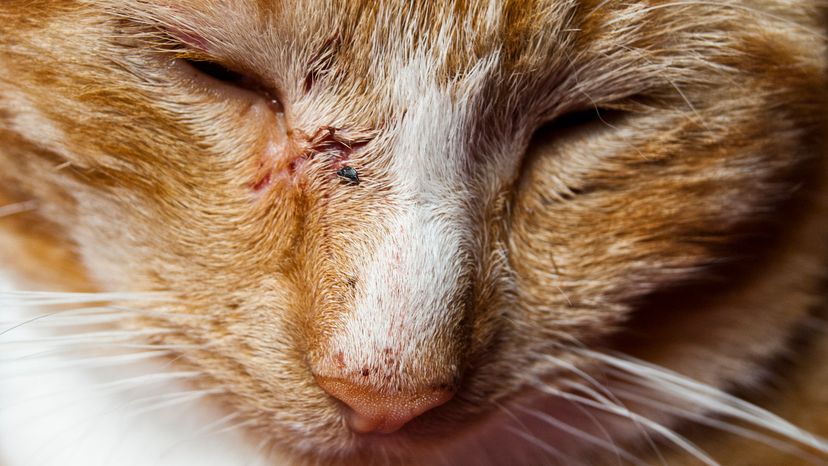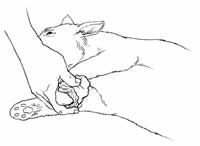
When cats interact with other animals, sometimes they are bitten. If your cat suffers an animal bite, you should tend to the wound right away for proper cat care.
If your cat has been in a fight, examine his or her fur carefully for hidden bite wounds. You'll often find punctures around the neck area, rump area, and on the legs. Look through the hair carefully to find bloodstains, which would indicate the skin has been punctured. Although there may be only a few punctures, extensive damage may have been done to underlying muscles. If the wounds are deep enough to require stitches, this should be done as soon as possible by a professional.
Advertisement
If the wound is minor, you can tend to it at home before heading to the veterinarian. Use caution and the following tips to care for your cat's animal bite.
Step 1: Approach the cat carefully, and make sure to restrain the cat if it is excited or nervous.
Step 2: Clip the hair around the wound to assess the damage.
Step 3: Flush the cat's bite wound thoroughly by pouring 3 percent hydrogen peroxide into it. Do not use any other antiseptic. This is one of the major complications of a bite.
Step 4: Examine the cat's bite wound. If the tissue under the wound appears to pass by when you move the skin, the wound will probably require stitches.

Step 5: Do not bandage the wound. Allow the wound to drain unless there is excessive bleeding. If the wound does bleed excessively, follow these steps:
Step 5a: Cover the wound with a clean cloth, sterile dressing, or sanitary napkin.
Step 5b: Place your hand over the dressing and press firmly.
Step 5c: Keep pressure on the dressing to stop the bleeding. If blood soaks through the dressing, do not remove it. Apply more dressing and continue to apply pressure until the bleeding stops.
Step 6: If the wound is deep enough to require stitches, transport the cat to the veterinarian immediately.
Step 7: If the biting animal is destroyed, take it to the veterinarian for a rabies examination. Do not touch it with your bare hands. Be sure to wear gloves or wrap the body in a blanket. Your veterinarian will take care of the rabies examination.
Step 8: If your cat is not currently vaccinated for rabies, contact the veterinarian.
©Publications International, Ltd.
Advertisement